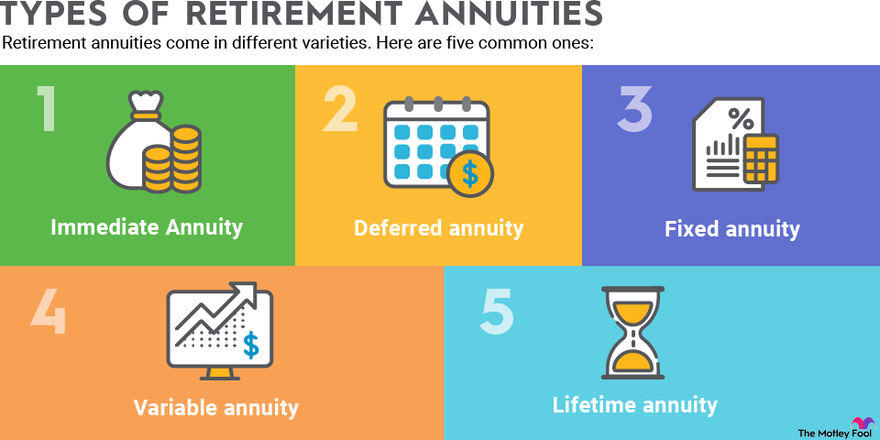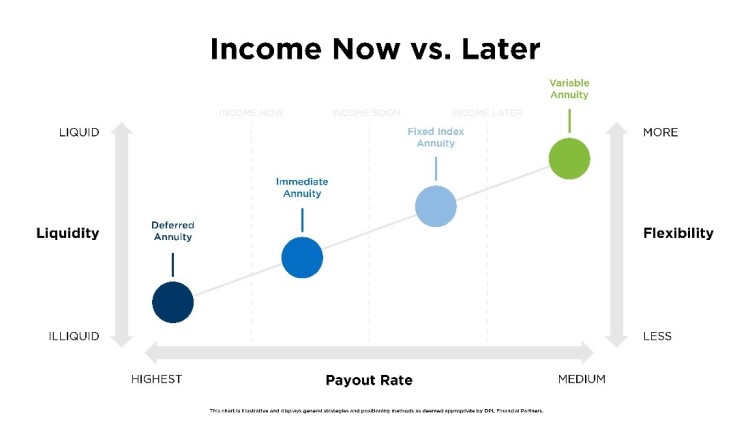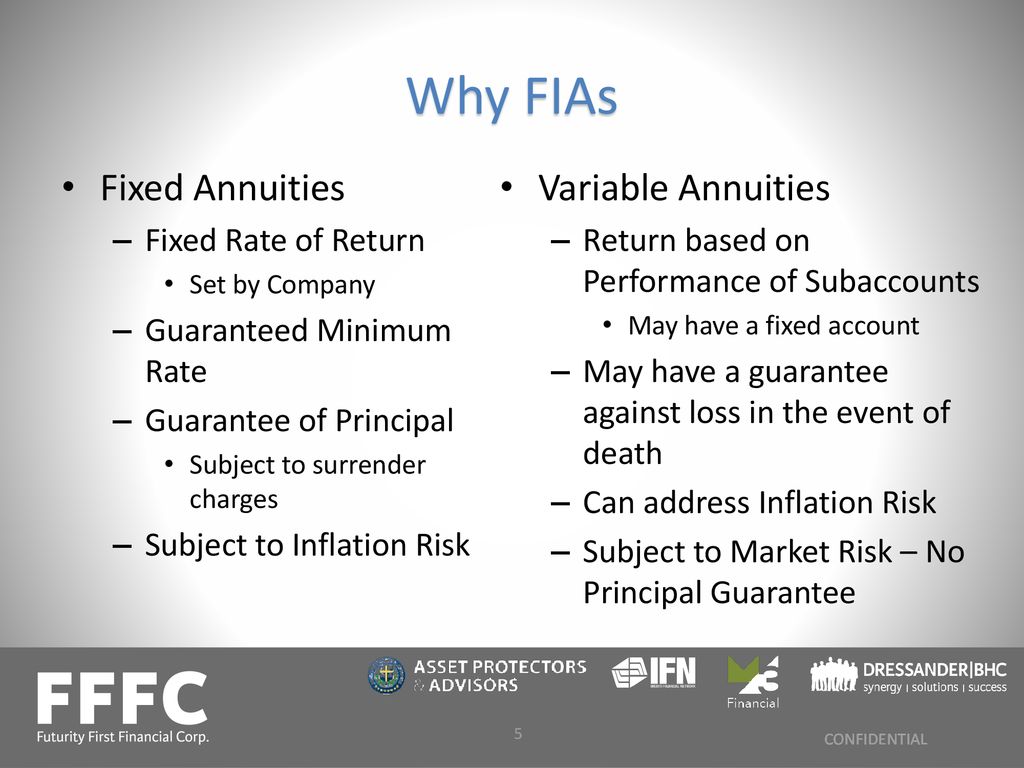All Categories
Featured
Table of Contents
Equally as with a repaired annuity, the proprietor of a variable annuity pays an insurance company a round figure or collection of payments for the guarantee of a collection of future settlements in return. As pointed out over, while a dealt with annuity grows at a guaranteed, constant rate, a variable annuity grows at a variable rate that depends upon the performance of the underlying financial investments, called sub-accounts.

Throughout the buildup stage, assets purchased variable annuity sub-accounts grow on a tax-deferred basis and are strained only when the contract proprietor withdraws those earnings from the account. After the build-up phase comes the earnings phase. In time, variable annuity properties should in theory raise in value up until the agreement owner chooses he or she want to begin withdrawing cash from the account.
The most considerable problem that variable annuities normally existing is high cost. Variable annuities have numerous layers of costs and expenses that can, in aggregate, create a drag of as much as 3-4% of the contract's value each year. Below are one of the most usual costs related to variable annuities. This cost compensates the insurance firm for the threat that it thinks under the terms of the agreement.
Highlighting Fixed Vs Variable Annuity Pros Cons A Comprehensive Guide to Investment Choices Defining Pros And Cons Of Fixed Annuity And Variable Annuity Benefits of Fixed Vs Variable Annuities Why Fixed Index Annuity Vs Variable Annuities Matters for Retirement Planning How to Compare Different Investment Plans: Explained in Detail Key Differences Between Different Financial Strategies Understanding the Key Features of Long-Term Investments Who Should Consider Fixed Income Annuity Vs Variable Annuity? Tips for Choosing Pros And Cons Of Fixed Annuity And Variable Annuity FAQs About Fixed Annuity Vs Variable Annuity Common Mistakes to Avoid When Planning Your Retirement Financial Planning Simplified: Understanding Fixed Income Annuity Vs Variable Annuity A Beginner’s Guide to Deferred Annuity Vs Variable Annuity A Closer Look at Fixed Annuity Or Variable Annuity
M&E expense charges are computed as a percent of the contract worth Annuity providers hand down recordkeeping and other administrative costs to the contract owner. This can be in the form of a flat annual charge or a portion of the agreement value. Management charges may be consisted of as component of the M&E danger charge or may be analyzed separately.
These charges can vary from 0.1% for passive funds to 1.5% or even more for proactively managed funds. Annuity contracts can be customized in a variety of means to offer the details requirements of the contract owner. Some usual variable annuity riders include guaranteed minimal accumulation benefit (GMAB), ensured minimum withdrawal advantage (GMWB), and ensured minimal revenue benefit (GMIB).

Variable annuity payments supply no such tax obligation deduction. Variable annuities tend to be highly inefficient cars for passing wide range to the future generation because they do not appreciate a cost-basis adjustment when the initial agreement proprietor passes away. When the proprietor of a taxable financial investment account passes away, the price bases of the investments held in the account are adapted to show the marketplace rates of those investments at the time of the proprietor's fatality.
Exploring the Basics of Retirement Options Everything You Need to Know About Financial Strategies What Is Annuities Fixed Vs Variable? Features of Smart Investment Choices Why Fixed Vs Variable Annuity Pros And Cons Is Worth Considering How to Compare Different Investment Plans: Simplified Key Differences Between Fixed Annuity Vs Variable Annuity Understanding the Key Features of Annuities Fixed Vs Variable Who Should Consider Strategic Financial Planning? Tips for Choosing Variable Annuities Vs Fixed Annuities FAQs About Fixed Income Annuity Vs Variable Growth Annuity Common Mistakes to Avoid When Choosing Fixed Interest Annuity Vs Variable Investment Annuity Financial Planning Simplified: Understanding Fixed Annuity Or Variable Annuity A Beginner’s Guide to Smart Investment Decisions A Closer Look at How to Build a Retirement Plan
Such is not the instance with variable annuities. Investments held within a variable annuity do not receive a cost-basis modification when the original proprietor of the annuity passes away.
One significant problem associated with variable annuities is the potential for conflicts of interest that may feed on the part of annuity salespeople. Unlike a monetary consultant, who has a fiduciary duty to make financial investment choices that benefit the client, an insurance coverage broker has no such fiduciary responsibility. Annuity sales are extremely profitable for the insurance policy specialists that market them due to high in advance sales compensations.

Numerous variable annuity contracts include language which places a cap on the portion of gain that can be experienced by specific sub-accounts. These caps protect against the annuity proprietor from fully joining a section of gains that could otherwise be enjoyed in years in which markets generate significant returns. From an outsider's viewpoint, it would appear that investors are trading a cap on investment returns for the aforementioned ensured floor on investment returns.
As kept in mind above, surrender costs can significantly restrict an annuity proprietor's capacity to relocate properties out of an annuity in the early years of the contract. Even more, while most variable annuities allow agreement proprietors to take out a specified amount during the build-up stage, withdrawals yet quantity commonly cause a company-imposed cost.
Withdrawals made from a set passion rate investment choice can additionally experience a "market worth modification" or MVA. An MVA readjusts the value of the withdrawal to show any kind of modifications in rate of interest from the time that the money was bought the fixed-rate option to the time that it was withdrawn.

Frequently, also the salespeople that sell them do not totally understand just how they function, and so salesmen occasionally victimize a customer's emotions to offer variable annuities instead of the advantages and viability of the products themselves. Our team believe that capitalists must totally comprehend what they have and exactly how much they are paying to have it.
Understanding Tax Benefits Of Fixed Vs Variable Annuities Everything You Need to Know About Financial Strategies What Is the Best Retirement Option? Advantages and Disadvantages of Different Retirement Plans Why Choosing the Right Financial Strategy Is a Smart Choice How to Compare Different Investment Plans: A Complete Overview Key Differences Between Different Financial Strategies Understanding the Risks of Fixed Vs Variable Annuity Pros And Cons Who Should Consider Fixed Index Annuity Vs Variable Annuities? Tips for Choosing the Best Investment Strategy FAQs About Planning Your Financial Future Common Mistakes to Avoid When Choosing a Financial Strategy Financial Planning Simplified: Understanding Your Options A Beginner’s Guide to Fixed Annuity Or Variable Annuity A Closer Look at How to Build a Retirement Plan
The exact same can not be claimed for variable annuity assets held in fixed-rate investments. These properties legally belong to the insurance provider and would certainly consequently go to danger if the business were to fall short. In a similar way, any type of guarantees that the insurer has actually accepted offer, such as an assured minimum revenue benefit, would be in question in case of a business failing.
Prospective purchasers of variable annuities ought to recognize and consider the economic condition of the issuing insurance business before entering into an annuity contract. While the benefits and disadvantages of numerous kinds of annuities can be disputed, the real problem bordering annuities is that of suitability. Simply put, the concern is: who should possess a variable annuity? This concern can be hard to respond to, given the myriad variations offered in the variable annuity universe, yet there are some standard guidelines that can help financiers determine whether or not annuities should play a role in their financial strategies.
As the stating goes: "Purchaser beware!" This short article is prepared by Pekin Hardy Strauss, Inc. Variable annuity risks. ("Pekin Hardy," dba Pekin Hardy Strauss Wealth Monitoring) for informational objectives just and is not planned as an offer or solicitation for organization. The information and data in this short article does not comprise lawful, tax, audit, investment, or various other expert advice
Table of Contents
Latest Posts
Breaking Down Variable Vs Fixed Annuity A Comprehensive Guide to Variable Annuities Vs Fixed Annuities What Is Tax Benefits Of Fixed Vs Variable Annuities? Pros and Cons of Fixed Income Annuity Vs Var
Breaking Down Fixed Indexed Annuity Vs Market-variable Annuity Key Insights on Your Financial Future Breaking Down the Basics of Fixed Vs Variable Annuity Pros Cons Advantages and Disadvantages of Dif
Breaking Down Indexed Annuity Vs Fixed Annuity Everything You Need to Know About Variable Annuity Vs Fixed Indexed Annuity What Is the Best Retirement Option? Benefits of Choosing Between Fixed Annuit
More
Latest Posts